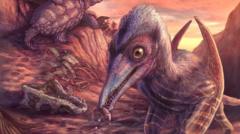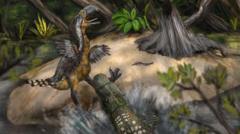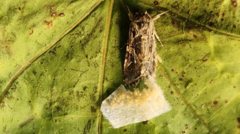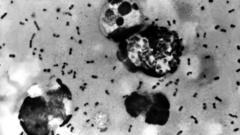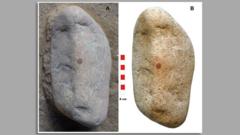The scientific community has been abuzz with the announcement of a newly identified pterosaur species, Eotephradactylus mcintireae, which dates back over 200 million years. The jawbone of this prehistoric flying reptile, known as the "ash-winged dawn goddess," was originally uncovered in Arizona in 2011, but advanced scanning techniques have now confirmed its status as a new species.
This significant find, made by a research team from the Smithsonian's National Museum of Natural History, confirms that Eotephradactylus mcintireae is the earliest pterosaur known to exist in North America, positioned in a geological context of approximately 209 million years ago. The creature’s name reflects the volcanic ash that played a crucial role in the preservation of its fossils within an ancient riverbed.
The fossil discovery was made in the Petrified Forest National Park, which, once a riverbank, has preserved this and numerous other fossils including fish scales, bones, and even coprolites, shedding light on an ancient ecosystem. Dr. Ben Kligman, a key researcher involved, explained that the small, hollow bones of Triassic pterosaurs are rarely fossilized, making this find particularly rare.
The preserved jawbone is modest in size, resembling that of a seagull, and its well-worn teeth suggest it likely preyed on hard-bodied fish, indicative of its diet. This discovery not only enriches our understanding of the ecological interactions during the Triassic period but also highlights a transformative moment in evolution, where seen species coexisted with those that would eventually go extinct.
Such fossil bed findings are invaluable, providing insights into a past world, linking modern animals to their ancient relatives, and illustrating a biological narrative of survival and evolution through time.
This significant find, made by a research team from the Smithsonian's National Museum of Natural History, confirms that Eotephradactylus mcintireae is the earliest pterosaur known to exist in North America, positioned in a geological context of approximately 209 million years ago. The creature’s name reflects the volcanic ash that played a crucial role in the preservation of its fossils within an ancient riverbed.
The fossil discovery was made in the Petrified Forest National Park, which, once a riverbank, has preserved this and numerous other fossils including fish scales, bones, and even coprolites, shedding light on an ancient ecosystem. Dr. Ben Kligman, a key researcher involved, explained that the small, hollow bones of Triassic pterosaurs are rarely fossilized, making this find particularly rare.
The preserved jawbone is modest in size, resembling that of a seagull, and its well-worn teeth suggest it likely preyed on hard-bodied fish, indicative of its diet. This discovery not only enriches our understanding of the ecological interactions during the Triassic period but also highlights a transformative moment in evolution, where seen species coexisted with those that would eventually go extinct.
Such fossil bed findings are invaluable, providing insights into a past world, linking modern animals to their ancient relatives, and illustrating a biological narrative of survival and evolution through time.

